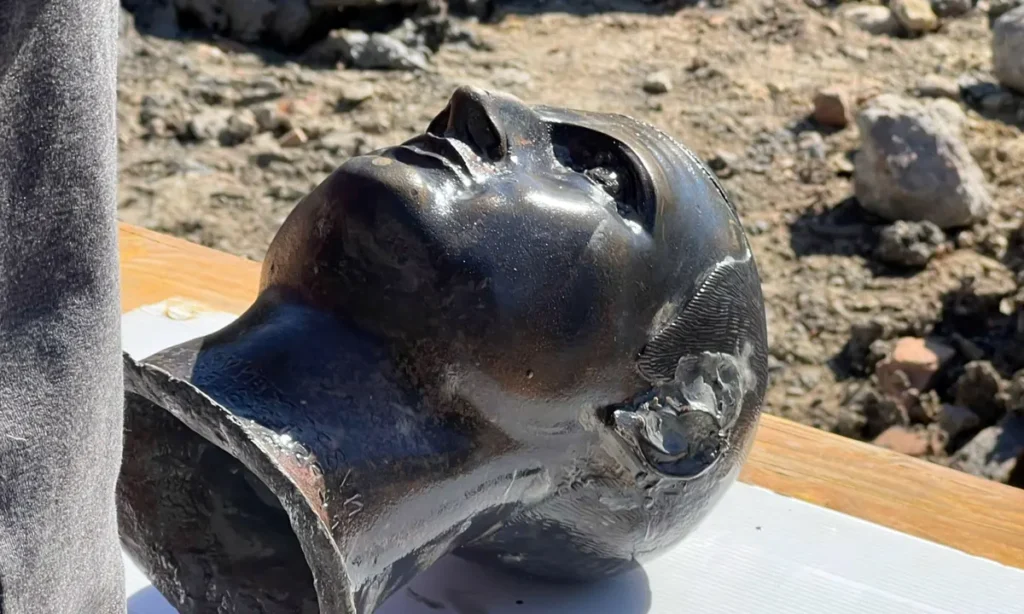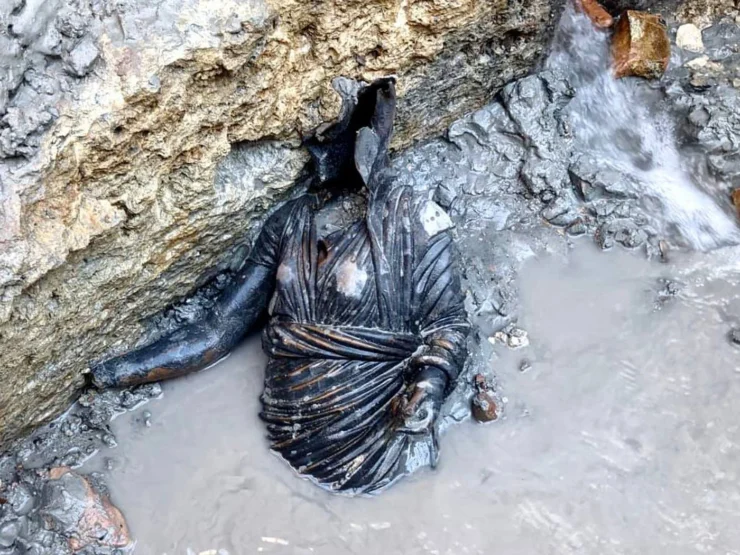In the ruins of an old holy sanctuary in Italy, archaeologists found a rare cache of 24 bronze statues made in the Etruscan and Roman periods. The find is being hailed as the most significant of its kind in the past fifty years.
The artifacts include miniature bronze casts of human body parts that were thrown into the warm waters of the sanctuary by sick people expecting to be healed.
The artifacts, which were uncovered between June and October during a digging expedition, are from the first and second centuries AD.
The significance of the find is compared to that of the Riace Bronzes, two enormous, naked statues of Greek warriors discovered in 1972 off the coast of Calabria in southern Italy.
From the second century BC, the sanctuary, located close to the Tuscan settlement of San Casciano dei Bagni, served as a site of worship for both the Etruscans and the Romans, who conquered the Etruscan lands and absorbed them into their expanding empire.
It was constructed around a hot spring in a region of Tuscany that still has natural baths where Italians go to soak in thermal waters.
The statues and other items would have been thrown into the water on purpose, and the thick mud at the bottom of the stone-walled pools has preserved them over the years.
The miniature bronze body parts depicted in the artifacts were sacrificed to the gods by worshippers who prayed for recovery and healing. They include representations of feet, hands, ears, lungs, hearts, intestines, and livers. The Telegraph said that Emanuele Mariotti stated that the discovery was “unique, the most significant discovery of bronzes in 50 years.”
“They were offered to the gods as a gift. Bronze statues like this would have been very expensive to make so we are talking about the VIPs of the ancient world – powerful Etruscan families and then rich Romans, perhaps even emperors. The sanctuary was a sacred place – it was not a public thermal bath.”
Igea, the goddess of health, Apollo, Isis, and other gods and goddesses are depicted in the bronze statues, some of which are a meter or three feet tall.
Around 5,000 gold, silver, and copper coins that Roman worshipers threw into the river have also been found by archaeologists.



Prof Jacopo Tabolli, the lead archaeologist at the dig, said the discovery would “rewrite history”.
The finds mean that the sanctuary is “a research laboratory on the cultural diversity of antiquity,” he said.
Numerous bronze artifacts are inscribed in Latin and Etruscan, proving that the language of the Etruscans was alive and well for a far longer period of time than previously believed.
Massimo Osanna, the director general of museums and archeological sites, said: “It’s the most important discovery since the Riace Bronzes and is certainly one of the most significant discovery of bronzes ever made in the history of the ancient Mediterranean.”
Building a museum to house the bronzes and converting the excavation site into an archaeological park are both planned.
